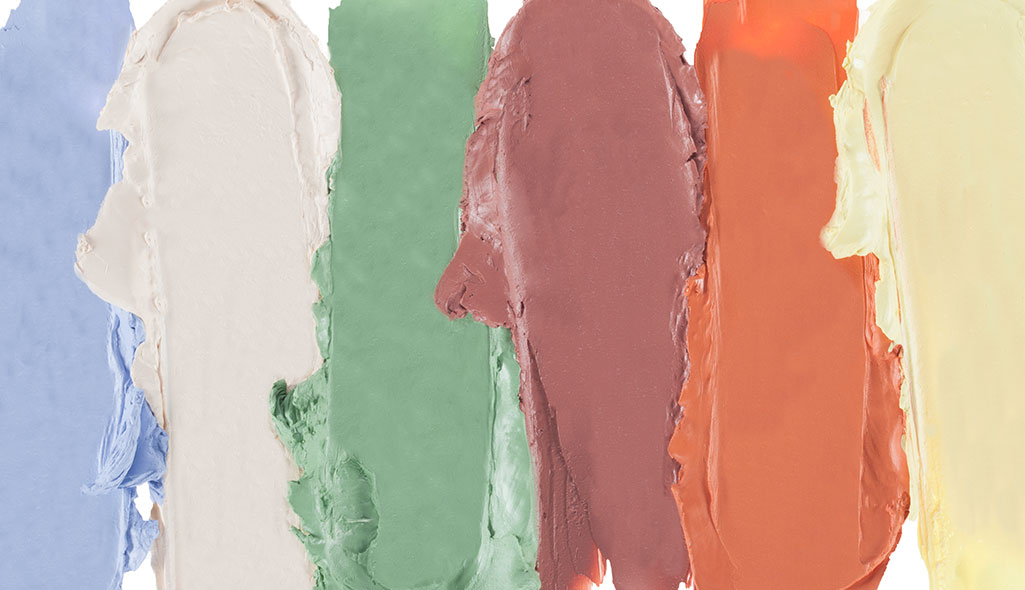
Pro Tips
Mastering color correction is fundamental for any professional MUA, and without a good understanding of color theory, you simply can’t correct. Color Correction
Color correction uses the basis of color theory to rectify discoloration, and therefore, the opposites on a color wheel will counteract each other.
Sounds simple? It is, however, there’s a time and a place for color correction – and the real skill comes with the ability to recognize the subtleties of every face’s unique skin tone, knowing where and when to use correction and a thorough appreciation of the pitfalls as well as the benefits.
Problem. Solution
As the name suggests, color correction is required when something needs putting right. It’s a solution to a problem, and not necessarily required with every face you work on. For example, if you can’t achieve a well-balanced, even and settled overall skin tone with just foundation and concealer, like dark circles, areas of redness, spots or even dullness showing through, then the answer lies within color correction.When deciding to correct, there are three steps. Firstly, you must identify where you need to correct, such as under the eyes or around the nose. Then you must determine exactly what it is you’re aiming to disguise, which could be shadows, yellow or redness, and only then you can establish the correct shades and product you need to use - and it’s vital you choose carefully, otherwise your entire make-up look could be a disaster.
Paul Merchant, Global Head of Make-up at Kryolan, always has his trusty wheel to hand: “It’s always helpful to have a color wheel in your kit – I’ve been color correcting for many years, in all types of make-up artistry, and I still refer to mine when I come across an unusual undertone.
Present & correct
The powers of the color correctors are not to be underestimated. Once you’ve identified the problem areas using your color wheel and understanding of skin tones & undertones (see M.U.I. issue 4 for a comprehensive guide on this), then you have a whole spectrum of solutions at your finger tips:Yellow – can be used to conceal purple or blue undertones, such as certain cases of varicose veins, bruising, stretch marks or broken capillaries.
Pink& red – suitable for use around the eyes to eliminate dark circles.
Orange & salmon – a remedy for under eye circles and dark spots, caused by aging or sun damage and even disguise a blue bruise, and a favorite of Kryolan educator, Jos Brands, who uses orange regularly to naturally lift certain deeper skin tones.
Green – one of the most commonly used corrector shades; use to mask anything from moderate redness and blemishes, to birthmarks, rashes, acne marks and skin conditions that have particularly red characteristics.
Peach – a lighter version of orange, so use on paler blues, like under-eye circles.
Violet, purple & blue – choose purple & violets to neutralize yellow tones, and blue corrects orange, so use to cover dark spots and camouflage fake tan.
Take your time deciding on your correction strategy, and a good rule-of-thumb is to match the strength of color to how light or dark the skin tone is. If the skin is fair, you’re likely to require the palest shades on your palette, medium to olive skin needs a darker version, and deeper skin tones will call for darker still. For example, pink may work well under the eyes for a pale skinned model, whereas a darker-skinned person would require a more orangey-peach hue; the same rule applies across all correction shades.
The correct correctors
There are a number of different product types and applications you can turn to for color correction, the most common are creams and fluids, and the solution you use depends on personal preference combined with the specifics of the skin complaint.Fluids, like the Ultra Make-up Base, are ideal for minor corrections and will provide a sheerer coverage; perfect for balancing the skin and covering blemishes.
Creams offer a medium and high coverage to conceal more pronounced color, skin complaints and pigmentation. Dermacolor Camouflage Creme has been developed specifically for correcting skin issues, or try Ultra Foundation Color Circle, which comes in three, four and six-color wheels, with 35 combinations in total.
Make no mistake…
When it comes to application, the last thing you need is the corrective hues showing through the foundation, or skin looking overcorrected and too light in areas, so it’s crucial the shade is spot on. Analyzing skin in natural, neutral light is the best way to get it right.Use correctors over primer and underneath foundation. Be careful if you’re correcting a specific skin complaint and use a caring water-based primer for sensitive skin, like Ultra Underbase. Always set each layer of make-up with a powder that’s compatible with the foundation; the most common mistake in correction is not setting it effectively, where the colors can end up mixing to leave the skin looking strange and muddy.
Another common mistake occurs in the under-eye area. The skin around the eyes is thinner, and applying too much make-up can result in an ageing effect, so keep the layers fine and try Make-up Blend with creams to dilute the product and make the coverage sheerer. In fact, ‘less-is-more’ should be your overall color correction mantra – too much corrector can have the opposite effect and can serve to draw attention to the very area you’re attempting to conceal. Use a light touch and blend well.
Once you’ve conquered the basics of color correction, you’ll discover the benefits are endless. For example, it can allow you to use less foundation and concealer due to its counterbalancing properties, which is particularly advantageous for high-resolution photography work, as thick make-up can look heavy and cakey through a camera lense.
Color correcting is a simple yet multifaceted technique at a MUAs disposal, and getting it right can transform your work from good to spectacular, but handle with care and sensitivity, advises Paul Merchant: “It’s important to manage expectations when correcting on skin conditions, like scaring or raised birthmarks. Color correcting only changes the color, not the texture - it won’t disguise lines or raised areas, but can work extremely hard to disguise skin issues and transform lives, not just looks.”


